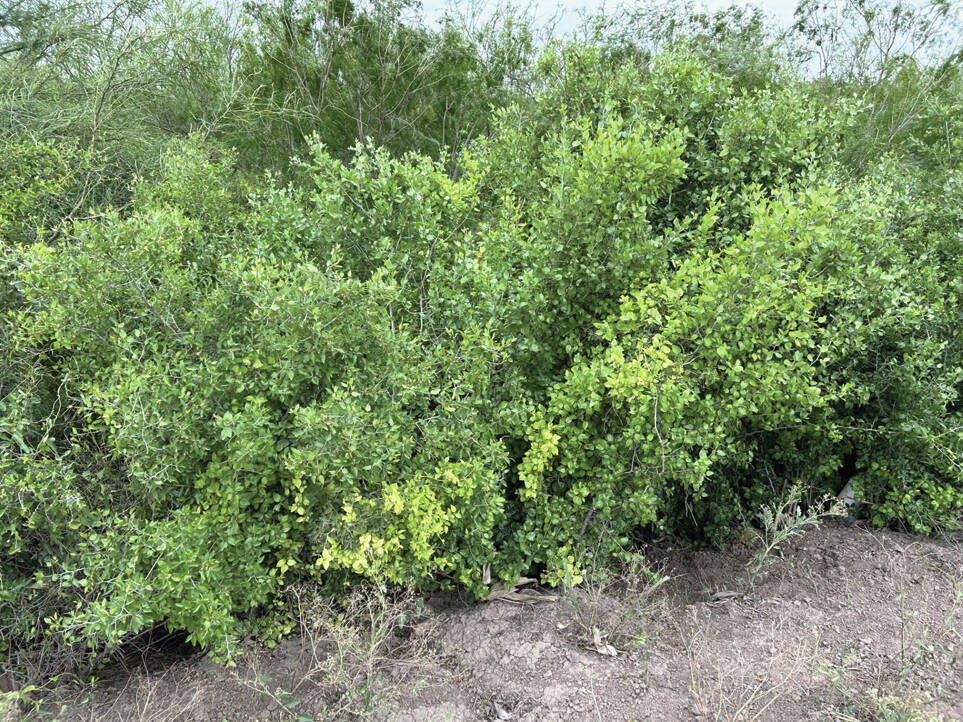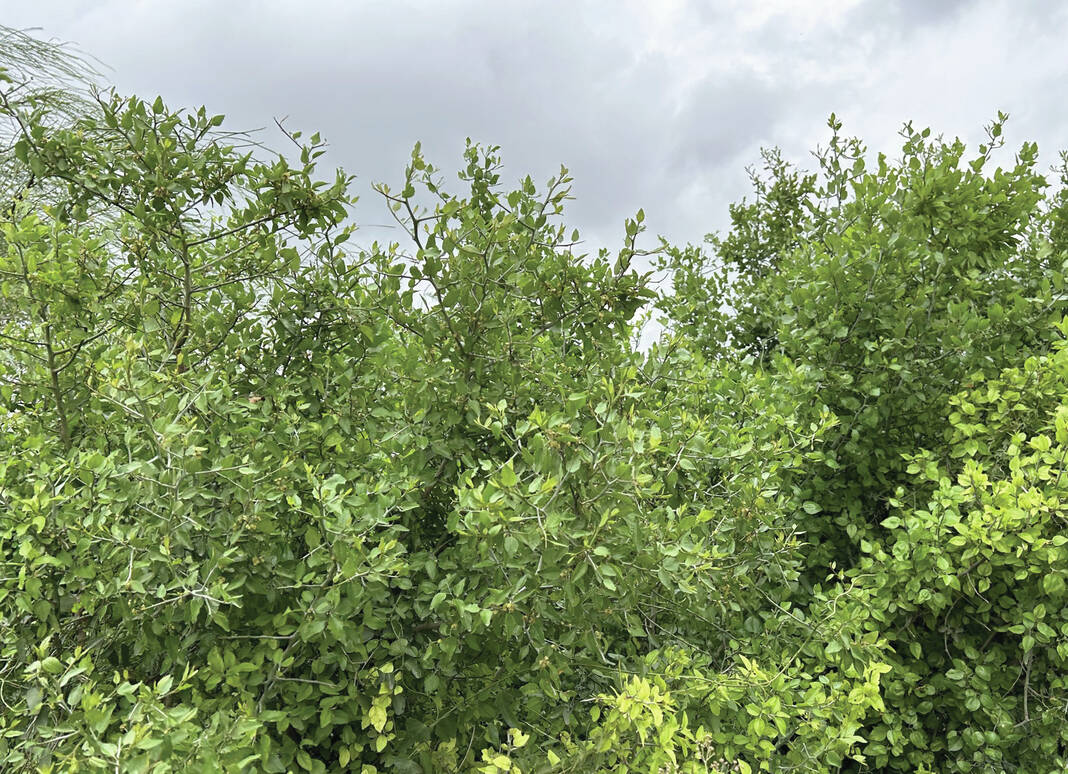|
Only have a minute? Listen instead
Getting your Trinity Audio player ready...
|
An estimated 1,200 plants are native to the Rio Grande Valley of Texas, making it an enormous selection from which to choose when considering populating a native habitat in your home garden. That number includes plants, vines, shrubs and trees. That is a lot of choice.
All of the Valley’s native flora, however, may not be suitable for a residential landscape or butterfly or pollinator garden. Lotebush, Ziziphus obtusifolia, is an interesting shrub that fits that category. Lotebush is a pretty shrub with blue-gray striated branches and grayish-green leaves that vary in shape from oval to oblong.

The leaves drop off quickly in the fall, revealing the obvious reason to use this plant with care. It has sharp thorns upwards of four inches long. When the bush is flush with leaves, the thorns look innocently like developing branches. The branches remain stark and devoid of leaves throughout the winter.
In spite of the starkness created by the bare branches for much of the year, lotebush is important in our habitat. I intentionally seek this species out to include in my observations during the City Nature Challenge bioblitz, an annual global citizen science project in April that documents the natural world and local wildlife, collecting it in a useful database depository at www.iNaturalist.org. I track the lotebush species a couple of times a year in the scrub brush behind our property.

This year, the habitat was noticeably changed from recent years, perhaps because of the drought. I found my usual lotebush and got a clear photograph. The adjacent shrub was lotebush, too, and in flower, a rare treat. The tiny yellowish flowers grow in clusters close to the branches; bloom time is March and April. The resulting fruit, when ripe, is dark blue and about the size of a pea. It is a one-seeded fruit, called a drupe, and a great source of food for wildlife.
This not-for-the-home-garden plant is in the Buckthorn family. Other common names include graythorn, gumdrop tree, blue brush, clepe and Texas buckthorn. Widespread across the southern and western parts of Texas, and west into New Mexico, Arizona and south into Mexico, it can grow as tall as nine to 13 feet with a tight, thick, tangled growth and a good-sized girth.
Its value is as a range plant and mainly as cover and shelter for small mammals. Some birds will nest among its branches. It is especially good as a cover for quail. Insects forage the leaves. The fruit is eaten by chachalaca, raccoon, coyote and many species of birds. Southern plains woodrats use twigs of the lotebush to build their houses, often amongst the intertwining branches of the shrub itself. The flowers attract butterflies and other nectar insects. The plant also is a larval host plant for the small marine blue butterfly.
As I was photographing and identifying the species along the edge of the track, I realized the bank of lotebush was quite extensive, painting a quite clear picture of an often used descriptive phrase: impenetrable thicket.
Anita Westervelt is a Texas Master Naturalist.








